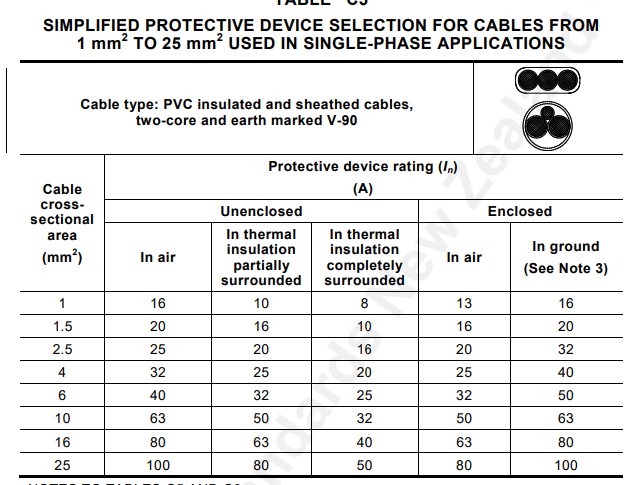Hello,
My house has an 11.4kW freestanding oven/stove in it, which I plan to replace with a 12.1kW one. These both fall into the "Assessed Current Load" of 32amp according to the electrical regulations.
Being a house built in the late 60s, it has a 30amp re-wireable fuse, which I planned to have replaced with the a 32amp MCB just for simplicity of a breaker would be easier to reset than a fuse wire. However, it turns out that isn't so simple as the 30amp fuse holder is larger, and electricians will not drill new holes into what is probably an asbestos panel (fair call). So, I could just leave the 30amp fuse, and the 30amp switch for the oven.
But then there is the wiring, which is 4mm². Generally 4mm² is considered fine for 32amp loads, although there seems to be a few electricians websites that don't agree with that, even though technically the calculations will tell you that it's fine for up to 39amps (https://www.jcalc.net/cable-sizing-calculator-as3008).
However, I've had a number of local electricians all insist that it has to be upgraded to 6mm² cable, and I can't work out why, other than that is the recommendation for new wiring runs. I even had some try to tell me the whole house wiring needs to be replaced (sight unseen) just because it was an older house. Of course that it nonsense, and yes all the cabling is at least TPS and appropriately rated.
Is there anything in the code that says that because I am replacing my oven with an almost identical oven, I need to replace the wiring with 6mm² wire? I would just reconnect the new oven with the existing cable out of the wall, but it is too short, and adding the convenience of a plug and socket seemed like an easy job. Now I'm not so sure.
Further to this, I was going through the as/nzs 3008 calculator https://www.jcalc.net/cable-sizing-calculator-as3008, and I think I have worked out why 6mm² is stated. 4mm is fine for 32amp insulated spaces, but not for insulated spaces. The cut off is 31amp, so I should be perfectly fine to keep a 30amp fuse, even if my walls and ceiling were properly insulated (which they aren't - the ceiling is partially, the walls are not).
Cheers,
M



